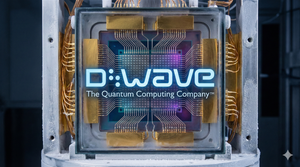Financial News
AI's High-Wire Act: Valuation Fears Grip the Stock Market Amidst the "AI Trade"

As November 2025 unfolds, the global financial markets are gripped by a potent mix of excitement and apprehension surrounding the burgeoning "AI trade." A handful of technology titans, often dubbed the "Magnificent Seven," have propelled stock indices to dizzying heights, fueled by unprecedented investment and fervent speculation in artificial intelligence. However, beneath the surface of this technological revolution, a growing chorus of analysts and investors are sounding alarms, warning that the market might be venturing into "bubble territory," reminiscent of the dot-com era's speculative excesses.
The current landscape presents a paradox: undeniable technological breakthroughs and transformative potential clash with valuations that, for many, appear increasingly detached from fundamental realities. The question on every investor's mind is whether this AI boom represents a sustainable, paradigm-shifting industrial revolution or an overhyped speculative frenzy destined for a sharp correction.
The AI Gold Rush: A Deep Dive into Market Dynamics and Investor Caution
The "AI trade" has been the dominant narrative in financial markets since late 2022, primarily driven by a select group of companies whose valuations have soared on the promise of AI-driven growth. By November 2025, the sentiment among a significant portion of fund managers is that AI-related stocks are indeed in "bubble territory," with some estimates placing overall equities as overvalued. Companies like Palantir Technologies (NYSE: PLTR) have seen price-to-earnings (P/E) ratios skyrocket to as high as 700x, vastly exceeding traditional healthy valuation metrics. Furthermore, the valuation premiums for AI infrastructure providers, including giants like NVIDIA (NASDAQ: NVDA), Amazon (NASDAQ: AMZN), and Microsoft (NASDAQ: MSFT), have more than quadrupled over the last decade, reaching 137% by late 2025.
The core of this AI-driven surge lies in the insatiable demand for advanced computing power and infrastructure. NVIDIA (NASDAQ: NVDA) has emerged as the undisputed king of this ecosystem, with its AI chips and data center solutions experiencing a "frenzy" of demand. Complementing NVIDIA's hardware prowess are the hyperscale cloud providers—Microsoft's (NASDAQ: MSFT) Azure, Amazon's (NASDAQ: AMZN) Amazon Web Services (AWS), and Alphabet's (NASDAQ: GOOGL) Google Cloud—which offer the scalable infrastructure essential for deploying and training complex AI models. Other crucial players include Taiwan Semiconductor Manufacturing Company (NYSE: TSM), the leading foundry for advanced AI chips, and Advanced Micro Devices (NASDAQ: AMD), another significant provider of AI-capable processors. Memory manufacturers like SK Hynix (KRX: 000660) and Micron Technology (NASDAQ: MU) are also benefiting from the surge in demand for High-Bandwidth Memory (HBM), critical for high-performance AI workloads.
However, the exuberance has been met with increasing caution and, in some cases, outright skepticism. As of November 2025, prominent investors have begun to signal their reservations through significant portfolio adjustments. Peter Thiel, a well-known venture capitalist, fully exited his NVIDIA (NASDAQ: NVDA) position in Q3 2025, a move that constituted nearly 40% of his investment fund. Even SoftBank, once NVIDIA's largest shareholder, divested its entire 32.1 million shares in October 2025, signaling a potential strategic repositioning within the AI landscape. These high-profile exits, coupled with recent market volatility—including a 12% plummet in Meta Platforms (NASDAQ: META) stock after a significant increase in AI capital expenditure guidance without clear ROI, and a notable drop in the Nasdaq Composite—are interpreted as "data-backed caution signals" that cannot be ignored.
Navigating the AI Divide: Identifying the Beneficiaries and the Vulnerable
The "AI trade" has created a clear delineation between potential winners and those at risk of being left behind or suffering from overvaluation. The primary beneficiaries are undoubtedly the foundational technology providers that enable the AI revolution.
The Winners:
- Semiconductor and Hardware Manufacturers: Companies like NVIDIA (NASDAQ: NVDA), Taiwan Semiconductor Manufacturing Company (NYSE: TSM), and Advanced Micro Devices (NASDAQ: AMD) are at the forefront, providing the essential chips and processing power. The demand for their products is directly tied to the expansion of AI capabilities across all industries. SK Hynix (KRX: 000660) and Micron Technology (NASDAQ: MU) are also critical, supplying the high-performance memory necessary for AI workloads.
- Cloud Computing and Infrastructure Providers: Microsoft (NASDAQ: MSFT) with Azure, Amazon (NASDAQ: AMZN) with AWS, and Alphabet (NASDAQ: GOOGL) with Google Cloud are indispensable. Their scalable infrastructure, robust platforms, and integrated generative AI solutions make them central to enterprise AI adoption.
- AI Software and Platform Developers: Companies like Palantir Technologies (NYSE: PLTR), with its Artificial Intelligence Platform (AIP), are seeing increased adoption as organizations seek to integrate AI models into their operations. Fortinet (NASDAQ: FTNT) is advancing in AI-powered cybersecurity, and data management firms like Snowflake (NYSE: SNOW) and specialized server providers like Super Micro Computer (NASDAQ: SMCI) also play crucial roles in the AI investment landscape. These companies are poised to benefit from continued enterprise spending on AI solutions and services.
The Potential Losers:
- Overvalued Speculative Ventures: Many AI startups and even some publicly traded companies with limited revenue or unproven business models, whose valuations are based purely on hype and future promise, face significant risk. If the market corrects, these firms are likely to experience sharp declines.
- Non-Adapting Industries/Companies: Businesses that fail to integrate AI into their operations or innovate their offerings could find themselves at a competitive disadvantage, potentially leading to declining market share and profitability.
- Investors Caught in the Hype: Retail and institutional investors who have chased the highest-flying AI stocks without thorough due diligence, particularly those with high debt or concentrated portfolios, could suffer substantial losses if a market downturn materializes. The massive capital expenditures by Big Tech, while necessary for AI development, also raise concerns about potential erosion of profit margins if the return on investment doesn't materialize quickly enough.
Echoes of the Past: AI's Broader Significance and Historical Parallels
The current "AI trade" is not merely a sectoral boom; it represents a profound technological shift with wide-ranging implications, often described as the "4th Industrial Revolution." AI's potential as a productivity enabler across virtually every industry—from healthcare and finance to manufacturing and logistics—is undeniable. This widespread applicability distinguishes it from past technological fads. However, the intensity of the market's reaction and the rapid ascent of valuations have drawn striking parallels to the infamous dot-com bubble of the late 1990s.
Historical Precedents and Similarities to the Dot-Com Bubble:
- Valuation Disconnects: Both eras witnessed asset prices inflating rapidly, often detached from underlying business fundamentals. Many AI startups today, much like dot-com companies, command high valuations despite limited revenue.
- Investor FOMO: The fear of missing out (FOMO) has been a powerful driver, pushing investors into speculative assets.
- Circular Financing: Concerns exist about companies like NVIDIA (NASDAQ: NVDA), Microsoft (NASDAQ: MSFT), and Oracle (NYSE: ORCL) engaging in "circular financing," where they invest in and procure services from each other, potentially inflating valuations.
- Massive Capital Inflows: Venture capital funding for AI startups has reached unprecedented levels in 2025, with trillions of dollars invested in AI infrastructure, echoing the massive capital deployment during the internet boom.
- Market Concentration: The "Magnificent Seven" now represent 35% of the S&P 500, a level of market concentration that surpasses even the peak of the dot-com era.
- "Get Big Fast" Strategy: A focus on market share over profitability, a hallmark of the dot-com bubble, is also observed in some AI ventures.
- Underwhelming Project Returns: A 2025 MIT report highlighted that 95% of AI pilot projects fail to deliver measurable financial benefits, despite significant enterprise investments, mirroring the struggles of many early internet initiatives.
Key Differences and Nuances: Crucially, there are significant distinctions. Unlike many speculative internet companies of the 1990s, AI has already demonstrated substantial real-world applications and tangible benefits across diverse sectors. Furthermore, many of the leading AI companies today, such as NVIDIA (NASDAQ: NVDA), Apple (NASDAQ: AAPL), Microsoft (NASDAQ: MSFT), and Alphabet (NASDAQ: GOOGL), are established, highly profitable entities with robust business models, a stark contrast to the largely unprofitable firms at the dot-com bubble's peak. Another significant difference is the current AI boom's capital expenditure-driven nature, with massive investments in physical infrastructure like data centers and specialized hardware. This shift towards an "asset-heavy" model could, historically, lead to lower returns for investors over the long term, despite the immediate growth. Regulatory and policy implications are also beginning to emerge, particularly concerning data privacy, algorithmic bias, and potential antitrust issues in the highly concentrated AI market.
What Comes Next: Navigating the Future of AI Investment
The coming months will be critical in determining the trajectory of the "AI trade" and whether the market can sustain its current valuations. Short-term, investors should brace for continued volatility. The intense scrutiny on AI-related earnings reports and future guidance will likely dictate market sentiment. NVIDIA's (NASDAQ: NVDA) upcoming earnings report on November 19, 2025, is widely viewed as a "global stress test" for the entire AI narrative, with the market keenly watching for signs of sustainable profits beyond mere revenue beats. Further clarity on Federal Reserve policy and employment data will also play a role in shaping investor confidence.
In the long term, the potential for AI to drive productivity and innovation remains immense. However, the market will increasingly demand tangible returns on the massive capital expenditures being poured into AI infrastructure. Companies will need to demonstrate clear, profitable use cases and sustainable business models beyond mere hype. This could lead to a period of consolidation within the AI sector, where well-capitalized and fundamentally strong companies acquire smaller, innovative firms, or where less viable ventures falter. Strategic pivots will be essential for companies to adapt to evolving AI capabilities and market demands, focusing on specific industry applications where AI can deliver clear value. Opportunities will emerge for companies that can effectively integrate AI to enhance efficiency, create new products, and deliver superior customer experiences, while challenges will persist for those unable to justify their valuations with concrete results.
The AI Investment Conundrum: A Critical Juncture for the Market
The "AI trade" represents a pivotal moment in financial history, characterized by both unprecedented technological potential and significant speculative froth. The key takeaway is a dual reality: AI is undoubtedly a transformative force poised to reshape industries and economies, but the market's current enthusiasm has pushed many valuations into precarious territory. The concentration of market gains in a few dominant players, coupled with historical parallels to past bubbles and increasing warnings from seasoned investors, suggests that caution is warranted.
Moving forward, investors should shift their focus from mere revenue growth to sustainable profitability and verifiable returns on AI investments. The market will increasingly differentiate between companies with genuine, value-generating AI applications and those riding the wave of speculative hype. Watching for clear indications of how massive capital expenditures translate into improved margins and sustained earnings will be crucial. The coming months will likely test the resilience of the AI narrative, potentially leading to a more rational, albeit potentially painful, recalibration of valuations. Investors should prioritize due diligence, diversification, and a long-term perspective, carefully evaluating the fundamentals of AI-related companies rather than succumbing to the fear of missing out.
This content is intended for informational purposes only and is not financial advice
More News
View More




Recent Quotes
View More
Quotes delayed at least 20 minutes.
By accessing this page, you agree to the Privacy Policy and Terms Of Service.



